

The original Lumix G9 mirrorless camera was launched way back in 2017, and we absolutely loved it, awarding it our highest 5-star Essential rating and commenting that “the Lumix G9 is the most well-specified, well-built and well-rounded Panasonic mirrorless camera to date”.
Six years is an awfully long time in the world of photography, though, so Panasonic have finally updated it for 2023 with the launch of the Lumix G9 II. But what exactly has changed, is it really worth upgrading and ultimately which one should you buy?
We’re bringing you this Panasonic Lumix G9 II vs Panasonic Lumix G9 head-to-head comparison to help you choose between the two cameras.
You can also read our detailed Panasonic Lumix G9 II review and Panasonic Lumix G9 review to find out exactly what we think of each model in much more depth.
Sensor
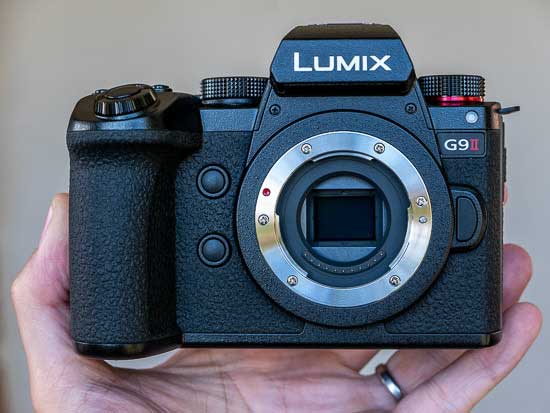
The image sensor is one of the main differences between the new Lumix G9 II and the older Lumix G9.
Both cameras have a Micro Four Thirds rather than an APS-C or 35mm full-frame sensor.
The original Lumix G9 has a 20.3 megapixel sensor CMOS MFT sensor.
The 2023 Lumix G9 Mark II has a higher-resolution 25.2 megapixel CMOS MFT sensor.
This sensor gives the new version the edge in resolution over the previous Lumix G9, allowing you to apply more aggressive crops or make bigger prints.
Even more importantly, the Mark II model is built around a newly developed sensor that for the first time on any Lumix MFT camera supports Hybrid Phase Detection Auto-Focus.
All previous Lumix MFT cameras, including the original Panasonic G9, have used a contrast-based AF system.
We’ll talk more about this below, but suffice to say this is a big deal that will be more than enough reason alone to buy the G9II rather than the G9.
Processor
The new Lumix G9 II uses the very latest Venus Engine processor with L² technology, which Panasonic claim is 2x faster than the previous generation processor used in the G9.
This provides higher resolution, higher bit rates and minimises rolling shutter.
ISO Speed
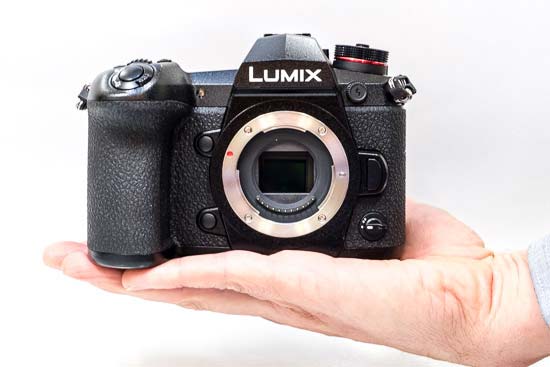
The Lumix G9 offers a native ISO range of 200-25,600 ,which can be expanded down to ISO 100.
The ISO range on the Mark II version is slightly broader, running from ISO 100-25,600 and capable of being dropped down to ISO 50 if required.
High Resolution Mode
The G9II is the latest Lumix camera to offer the special High Resolution mode, which delivers 100 megapixel images for the ultimate quality when detail really matters.
In the High Resolution mode the camera rapidly takes 8 separate images and combines them into one JPEG or Raw file.
The original G9 also offered this feature, so you don’t need to upgrade to the latest model to take advantage of it, but it only offered 80 megapixel resolution.
In addition the new G9II benefits from having the same hand-held high-res mode as the GH6, whereas you have to mount the G9 on a tripod for the best results.
Video
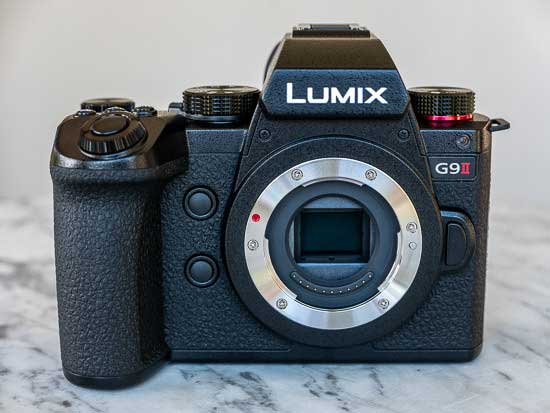
The new G9II completely out-performs the 6-year-old G9 in terms of video, as you’d perhaps expect, and is definitely the camera to go for if you’re a hybrid photo/video shooter.
The original G9 can record 4K movies at 60fps, and there’s also a 180fps full HD slow-motion mode. It can only record in 4:2:0 8-bit, though, which may or may not be a deal-breaker for the dedicated videographers out there.
The G9II supports up to 5.7K 60p and 4K/C4K 120p 10-bit 4:2:2 or 4:2:0 recording, depending on the specific mode – 5.7K (17:9) 30p/25p and C4K/4K 120p/100p are 4:2:0 10-bit.
ProRes 422 HQ and ProRes 422 can be recorded to an external SSD recorder with one caveat – if you’re recording more than 60fps to the SSD it requires an additional external power source.
5.8K 30p/25p/24p 4:2:0 10-bit anamorphic 4:3 modes are recorded utilising the full area of the sensor and there are also 4.4K 60p/50p/48p modes.
The Lumix G9 II has V-Log/V-Gamut built-in which provides 13+ stops of wide dynamic range, and the Dynamic Range Boost mode expands it to 14+ stops.
The G9II uses the full area of the sensor to record then downsamples it in-camera, which means that your framing won’t be cropped when composing.
Autofocus
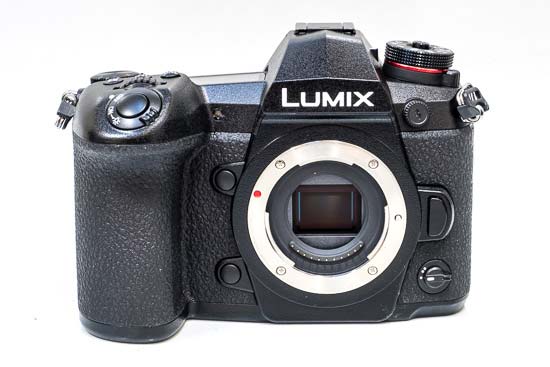
The new G9II is the first ever Lumix Micro Four Thirds camera to use a hybrid contrast and phase-detection auto-focus system.
Fast and dependable and providing 779-area metering, the new PDAF system is able to detect target subjects in difficult conditions such as low light and backlighting and, once locked on, will remain tracking them even with other moving objects in the frame.
The previous G9 employs a 225-point contrast-based auto-focusing system which utilises Panasonic’s clever DFD (Depth from Defocus) technology.
We found the G9 to be fast and responsive in the single AF-S mode for both stills and video, but a little less so in the continuous AF-C mode, and it was prone to the characteristic “pulsing” effect as the DFD system as it scans back and forth.
If continuous auto-focusing is top of your requirements list, then it’s definitely worth choosing the newer G9 II model with its superior phase-detection AF system.
Subject recognition on the G9II has been further improved so that it now recognises cars and motorcycles and it can differentiate between the body and eye of an animal – the original G9 couldn’t do either of these things.
Burst Shooting

The Panasonic G9 has a pretty amazing Burst mode which enables you to take 60 frames per second using the electronic shutter with the focus and exposure locked at the first frame, or even more impressively 20 frames per second with full-time AF tracking.
The buffer in both of these modes is for up to 50 JPEG images or 50 RAW files at the highest available image quality.
The new 2023 G9 II ups the ante considerably by offering 60fps burst shooting with continuous auto-focusing and
75fps with the focus and exposure locked at the first frame.
There is also a
much larger 200 shot buffer for both JPEG and RAW files which provides around 3 seconds of shooting time.
If you prefer to use the mechanical shutter, the burst rates have also been improved slightly from 12/9fps (AFS/AFC) on the G9 to 14/10fps on the G9 II.
Body
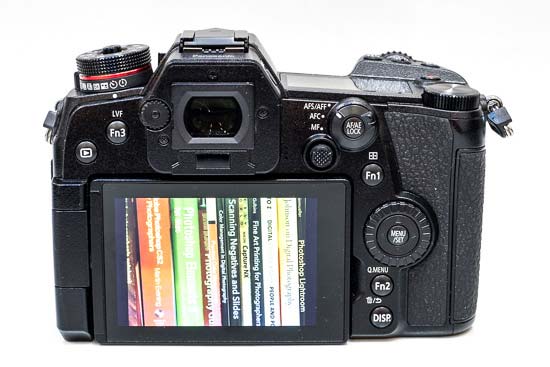
The new G9II is virtually identical to another recently released camera, the full-frame S5II, rather than following in the footsteps of its 6-year-old predecessor.
Indeed, apart from the difference in sensor size that becomes apparent when you remove the lens, you’d be hard-pressed to tell the G9 II and S5 II apart.
The G9 II benefits from inheriting the same 8-way joystick, expanded drive dial, 3.0-inch free-angle touch-control monitor and large, 3,680K-dot OLED Live View Finder as the S5 II.
The status LCD on the top-panel of the original G9 has been removed to make way for the new separate drive and shooting mode dials that are positioned on either side of the viewfinder, and the G9’s slanted top-panel has made way for the much squarer design of the G9 II.
Measuring 134.3 x 102.3 x 90.1 mm / 5.29 x 4.03 x 3.55 inch, the new G9 II is actually exactly the same size as the S5 II, which may disappoint those who value the compactness of a Micro Four Thirds camera. It is quite a bit lighter though, weighing in at 658g / 1.45 lb with a battery and memory card fitted versus the 740g S5II.
The original G9 measured 136.9 x 97.3 x 91.6 mm and weighed 579g body only, so it was a little more compact and 79g lighter than the new Mark II version.
Current G9 owners will face a learning curve when they upgrade to the G9 II, whilst S5 owners will feel instantly at home, such is the similarity between them and the G9 II.
Viewfinder
The Lumix G9 has an OLED electronic viewfinder that offers 100% field of view, 10000:1 contrast ratio, 21mm eye-point and 3,680K-dot resolution,
It has a magnification ratio of approx.1.66x / 0.83x, making it a veritable pleasure to look through, and operates at a native rate of 120fps with a minimum lag of less than 0.005 sec, which helps make it completely flicker-free.
The new G9 II has a virtually identical EVF to the previous G9, although strangely the magnification is ever so slightly lower at 0.80x.
LCD Screen
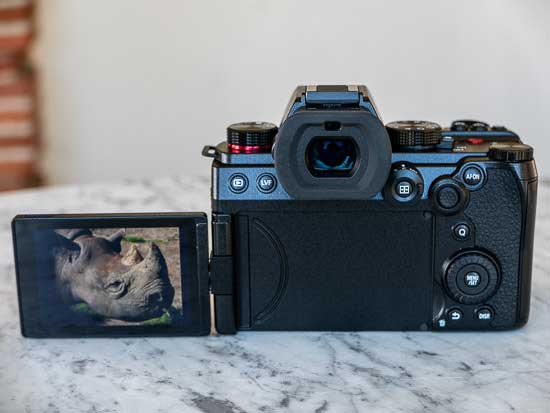
Both models have a fully articulating 3-inch, 3:2 ratio, free-angle design LCD touch-screen which means that you can flip it out to the side, rotate it forwards for easier operation when pointing the camera at yourself, and fold it flat against the back of the camera to stop it from getting scratched.
The Lumix G9 II has a much higher-resolution LCD screen than the Lumix G9 though, with 1.84 million dots versus 1.04 million dots on the original model.
IBIS
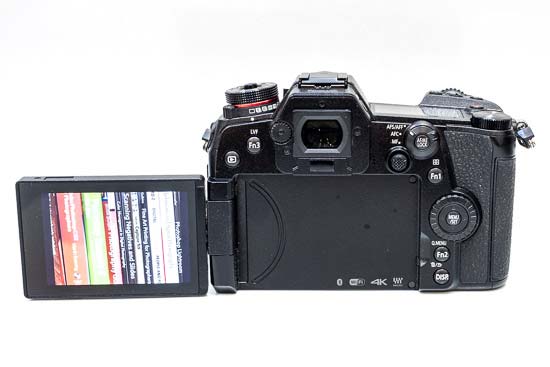
Back in 2017 Panasonic significantly upgraded the dual image stabilisation system on the G9, making it possible to use an impressive 6.5 stops slower shutter speed than with it turned off.
Fast forward to 2023 and the G9 II takes things to another level by providing 8-stops of in-body image compensation (IBIS) and 7.5 stops of 5-axis dual image stabilisation when used with compatible lenses.
The stabilisation system in both cameras works for both stills and video recording.
Memory Cards
Both of these cameras only dual memory card slots, both support the faster SD UHS-II memory card standard, and both have a dedicated memory card port that’s hidden behind a lockable door on the left-hand side of the camera.
Battery Life
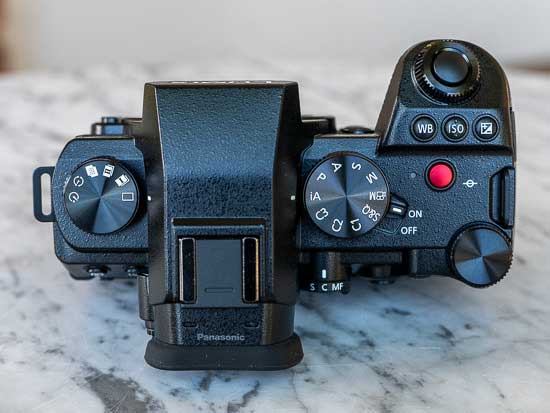
The Panasonic Lumix G9 II now uses exactly the same large capacity DMW-BLK22 battery as the Lumix GH5 II, S5, S5 II and S5 IIX models.
The previous Lumix G9 uses the DMW-BLF19 battery, so you can’t use G9 batteries in the G9II and vice-versa.
Battery life is actually very similar at around 380 shots on the G9 when using the Live Viewfinder and 400 using the LCD screen, and 390 shots on the G9 II using either the EVF or LCD.
Both cameras can also be powered and charged via a USB connection, which is useful if you’re out and about and have a compatible powerbank to plug the camera into, but the G9 II uses the newer USB-C 3.2 variant.
Price

A price-tag of £1,699 / €1,899 body only makes the new Panasonic Lumix G9 II more expensive at launch than the Lumix G9, but that’s no surprise given both the 6-year interval and recent world events.
It’s also available in two different kits, with the Lumix G Vario 12-60mm F3/5-5.6 lens for £1,899 / €2,099 and with the Leica DG Vario-Elmarit 12-60mm F2.8-4.0 lens for £2,249 / €2,499.
In comparison, the Lumix G9 was priced at £1499 / €1,729 / $1699 body only, £1,699 / €1,929 with the Panasonic 12-60mm kit lens and £2,019 / €2,329 with the Leica 12-60mm lens when it first went on sale in January 2018.
Conclusion
Choosing between the new Panasonic Lumix G9 II and the previous Lumix G9 (which continues in the range for the time being) is something of a no-brainer – if you can afford the newer model, then go for it, as the Mark II version out-performs its now much older sibling in almost every way.
So what do you think? Would you choose the Panasonic Lumix G9 II or the original, significantly cheaper Lumix G9? Leave a comment below!






